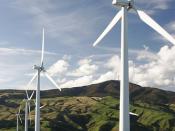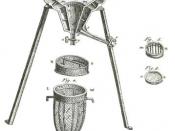Aim:
To investigate the Latent Heat of Vaporisation of water.
Independent Variables: voltage / energy
Dependent Variables: temperature
Controlled Variables: amount of water, voltage and current
We won't consider uncertainties here since it is a planning lab.
Hypotheses:
The water will heat up at a quicker rate if a lot of energy is added instead of a small amount of energy. Due to the fact that the more energy one applies to the immersion heater, the more heat it will release into the water, increasing its temperature.
To find the Latent Heat of vaporisation we need to rearrange this equation:
âÂÂm depends on the time; this is proven by this formula:
Apparatus & Materials:
1000 mL glass beaker, tap water, 0 to 110ðC-glass tube thermometer, ice cubes, stop watch, Voltmeter (0-20 V), Ammeter(0-2 A), NiCr wire, Crocodile Clips, digital scale
Procedure:
i) Assemble the apparatus as show in the diagram. Heat is applied by adding energy to the system
.
ii) Put a hand full of ice into the beaker and fill up with water. Mix significantly until the change becomes insignificant. Measure the mass of the water (total mass - mass of empty beaker). Read of voltmeter and ammeter, readings should stay constant. Do NOT add additional energy at any point during the experiment. Leave the beaker on the scale, since we are going to read off the mass of the water every 2 minutes to be able to graph âÂÂm vs t with fewer uncertainties. The closer the time interval, the smaller the uncertainties.
iii) Start the time as soon as the water starts to boil at a constant rate (temperature is not rising any more, bubbles rising at a constant rate). Let the experiment continue for approx. 30 min. to get enough raw data. At the end of...


